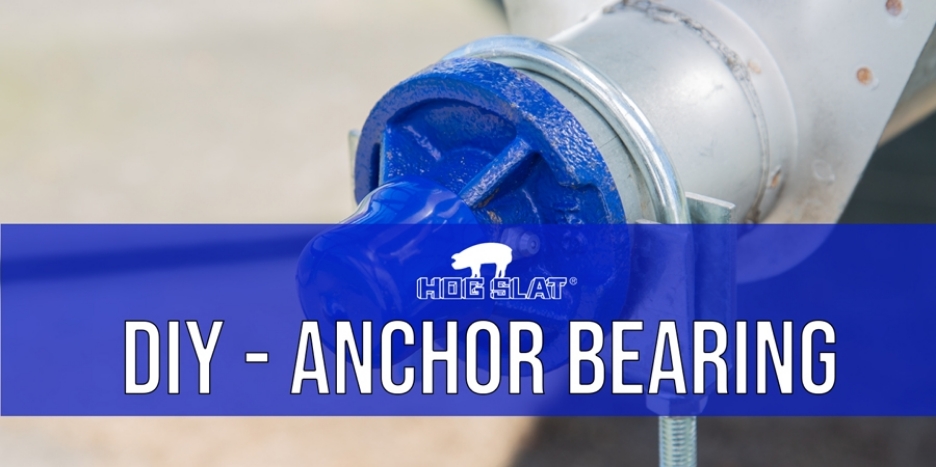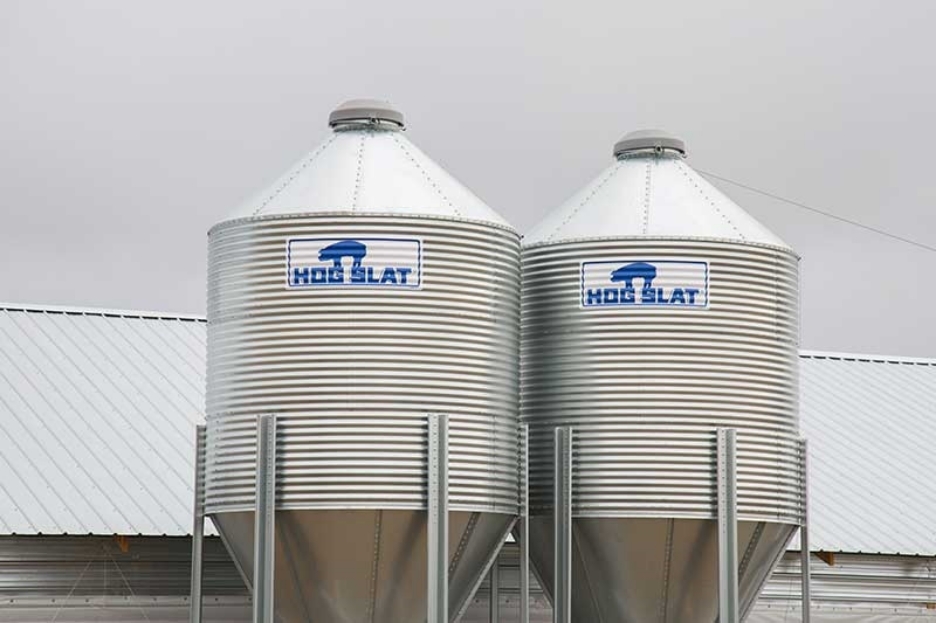Blog posts tagged with 'swine feed system'
 Hog Slat bins feature the industry's heaviest galvanized coating.
Hog Slat bins feature the industry's heaviest galvanized coating.
Steel corrosion, commonly referred to as rust, is an oxidization process occurring when iron in steel is exposed to oxygen and water. Rust causes steel to thin over time, reducing its strength and causing product failure.
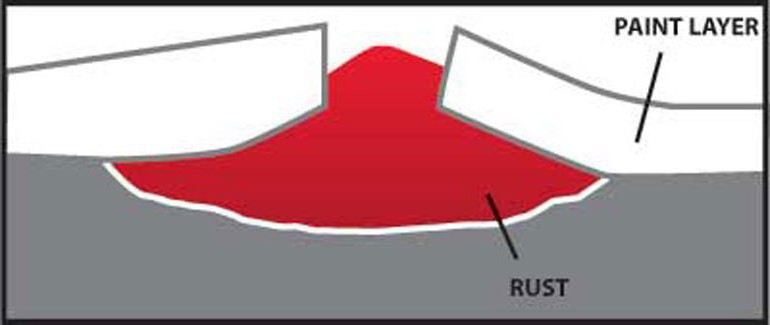 Paint coating protects steel from elements until damaged.
Paint coating protects steel from elements until damaged.
Any coating, which provides a barrier to moisture and oxygen, protects steel from corrosion. A painted surface provides an effective barrier until it is broken allowing moisture and oxygen to come in contact with the steel beneath. Rust develops at the breakage point and can even extend under the protective paint barrier.
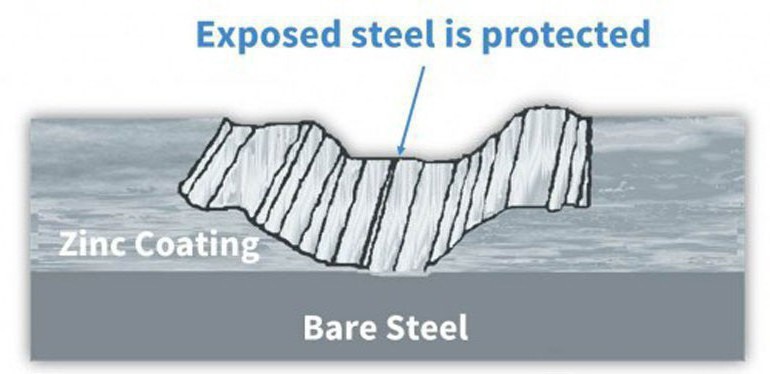 Galvanized coatings protect steel even when damaged.
Galvanized coatings protect steel even when damaged.
Similar to paint, a galvanized coating forms a protective barrier to protect steel from moisture and oxygen. Galvanized coatings also provide a second method of protecting steel by electrochemically "sacrificing" the zinc in the present of corrosive elements. In other words, the zinc corrodes, until it is depleted, instead of the metal underneath. Because it is physically bonded to the metal, galvanized coating does not allow rust to extend beneath its surface.
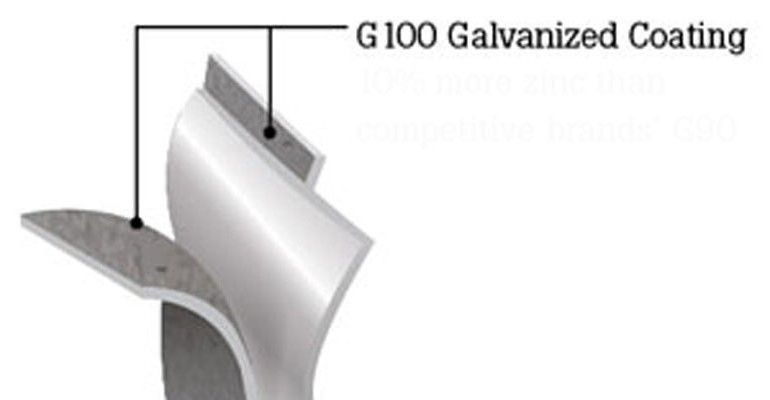 Heavier G100 galvanized coatings offer 10% longer service life.
Heavier G100 galvanized coatings offer 10% longer service life.
Galvanized coatings are expressed in ounces per square ft with conventional coatings designated as G30, G40, G60, and G90. These refer to thickness of .30, .40, .60 and 90 oz./ft2, respectively. Corrosion resistance is directly proportionate to the amount of zinc coating on the steel. Therefore we would expect the service life of G90 steel to be roughly three times that of G30 in the same environment. Likewise, increasing the galvanized coating on a feed bin from G90 to G100 increases the bin's service life by 10%.
Galvanized steel is an excellent choice for use in feed bin fabrication, as it does not degrade when exposed to the sun's ultraviolet rays like painted coatings or poly bins.
In addition to heavier galvanized coatings, Hog Slat bins are manufactured from stronger Grade 55 steel, come with an improved ladder design and water deflecting Weather Edge™. Every bin is backed by an extended 5-year warranty. To see more go to Bulk Feed Bins.
Not every labor saving idea for swine confinement lasted much past the initial development phase. From the 1960 Yearbook of Agriculture, we present the HOG-O-MATIC!
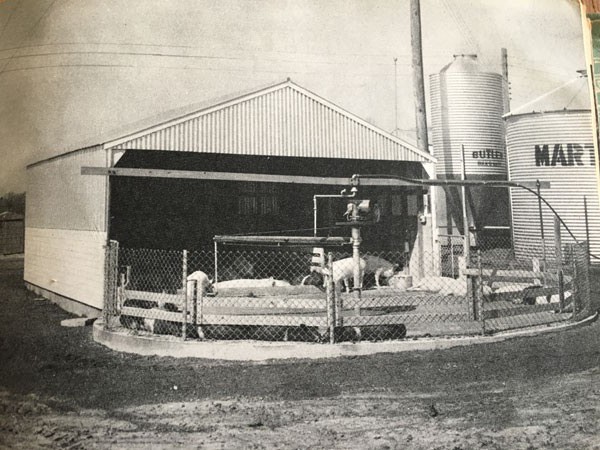
Hog-O-Matic
This automatic hog finishing facility – dubbed “Hog-O-Matic” – is equipped to feed the pigs and clean the floor under fully automatic control. Cleaning is done (below) with two jets of water under 70 pounds of pressure. The revolving boom circles the 21.5- foot exercise area every 2.5 minutes. A 4-inch center drain carries the wastes away.
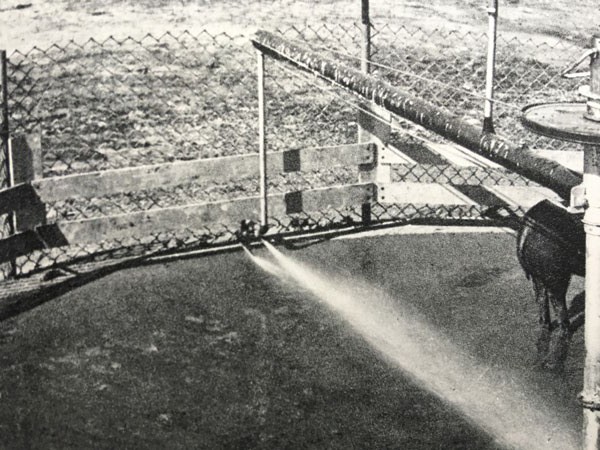
High-Pressure Water Jets clean pen floor
A good idea in theory for the time, but it is likely this system would not work well with sub-zero temperatures during a typical Midwestern winter. Here’s a more typical finishing floor from the early confinement years.
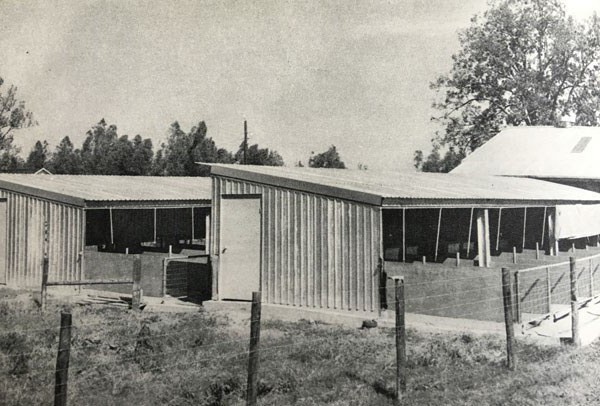
Reverse mono-slope finishing floors with rear access alley.
Hogs are housed in clean, airy, efficient buildings. The picture above shows one of the many new types of confinement housing during this time period. Raising hogs in confined quarters is a growing practice. The farmer designed this pen arrangement (below) with the plan of finishing two-thousand hogs per year.
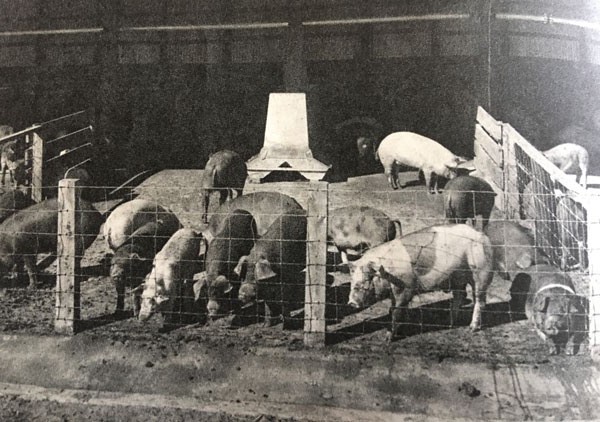
Labor-saving equipment included automatic watering and feeders filled with an overhead auger.
From these early designs, the industry continued to develop into the improved feeding and ventilation systems we have today. GrowerSELECT feed systems and AirStorm ventilation fans offer today’s producers great equipment backed by the best warranty in the business. To learn more call us at 800-949-4674 or go online at www.hogslat.com.
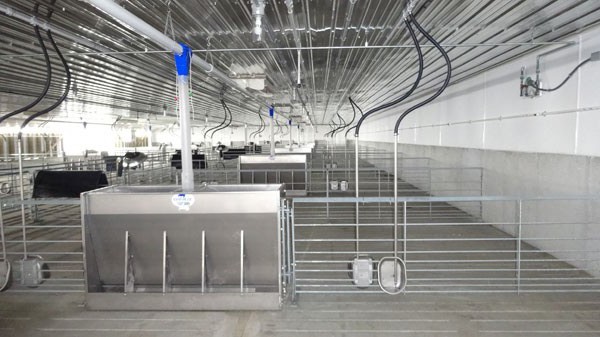
Interior view of a modern swine finisher constructed by Hog Slat.
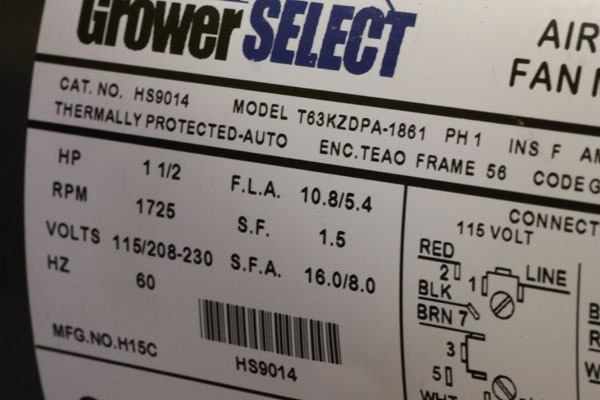
Nameplate from GrowerSELECT fan motor
Today’s livestock and poultry operations rely on electric motors for a variety of feeding and ventilation functions. Used in buildings that can be both dusty and humid, with fluctuations in voltage and varying workloads we subject our motors to a very hostile work environment.
When selecting replacement motors, it is important to select motors that are both efficient and designed with a “safety factor” that will allow them to last under harsh conditions.
While you may be familiar with the term Service Factor or S.F., there are a couple of important designations found on a motor nameplate that may need more clarification.
Service Factor is defined as a motor’s ability to operate under a short-term load. The higher a motor’s S.F. rating, the more durable the motor. Motors with high S.F. are expected to last longer. To illustrate, a 1-1/2 Hp motor with a 1.5 S.F. can provide 2.25 Hp for short-term use. However, it is not a good practice to continuously operate a motor above the rated workload. In other words, the same 1-1/2 Hp motor with 1.5 SF would not be selected to power a 60″ fan originally shipped with a 2 Hp motor.
Full Load Amps or F.L.A. represents the amount of current the motor is designed to draw at the rated horsepower. In the example nameplate, this means that when the motor is running under a full load at 230 volts, we can expect it to draw 5.4 amps. Motors with a lower F.L.A. for the amount of horsepower are considered more efficient to operate.
Service Factor Amps or S.F.A. represents the amount of current the motor will draw when running at the full Service Factor. In the example nameplate, the S.F.A. is eight amps at 230 volts.
Continually exceeding the S.F.A. shown on the nameplate can shorten motor life. Motors with a higher S.F.for the same horsepower have an increased “safety factor” and are expected to last longer under harsh conditions.
The most efficient, rugged motors are designed with a higher S.F., lower F.L.A., and higher S.F.A ratings. By comparing the information on a motor nameplate, we can select the best replacement motors for feeding and ventilation equipment.
Hog Slat designed the GrowerSELECT line of motors to help simplify a producer’s decision on selecting replacement motors. GrowerSELECT motors feature a high Service Factor (as high as 1.5) and higher S.F.A. rating to increase motor life. Each model number is a direct cross to the most popular brands of feed systems and fans used on producers’ farms. No matter what your existing brand of equipment we have a GrowerSELECT motor designed to replace it and save money while doing so. Shop GrowerSELECT motors.

GrowerSELECT Proxy Control on display at the 2016 World Pork Expo
One of the products Hog Slat introduced at the 2016 World Pork Expo is designed to give pork producers an improved method for controlling feed line motors.
The GrowerSELECT Proximity Drop Tube Control features a flat proxy sensor that can detect feed levels through the plastic housing. The flat proxy mounts to the side of the feed tube and doesn’t require drilling a hole for installation. The compact design takes up less room on the control compared to rod type proxy sensors.
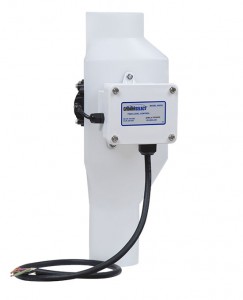
GrowerSELECT HS752

Flat Sensor
Like it happens with many advancements in electronics this improved sensor costs less than existing technology. A quick online search shows replacement rod type proxy switches costing between $117 and $150. The complete HS752 unit costs $125 and can replace the feed level control on any existing feed system.

Close up of sensor mounted on control
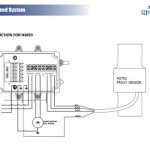
Simple wiring diagrams for existing feed systems.
Click here for manual illustrating wiring schemes for installing the HS752 on the most common feed systems.
To order go to www.hogslat.com , stop at a local store (see store locator) or call 800-949-4647.

How can we make the claim of selling the strongest, heaviest feed bins on the market at the best possible price to swine and poultry growers?
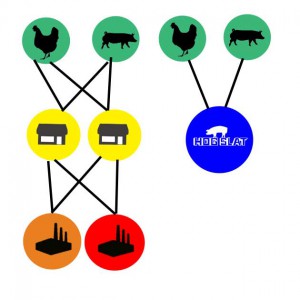
Traditional multilevel supply chain vs. Hog Slat’s Direct Distribution
Simple. Our direct distribution system eliminates the additional markup that dealers have to add to the bin’s price. Instead, that money goes back into building a stronger bin manufactured from heavier steel. These longer lasting bins are built with 5-10% more steel, by weight, than competitive brands.
Compare the features.

Most manufacturers only use 50,000 psi structural steel for the bin sheets and legs to reduce costs. Hog Slat bins are constructed entirely of GRADE 55 structural steel. The bin sheets, legs, roof sheets, bottom cone sheets…the entire bin.
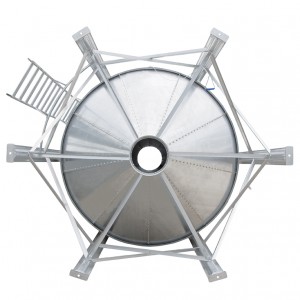
Heavy, dent resistant bottom cone sheets.
The bottom cone sheets of a bin are subjected to extra abuse from hammers and mallets used to dislodge bridging feed. That’s why we used thicker steel to resist dings and dents.
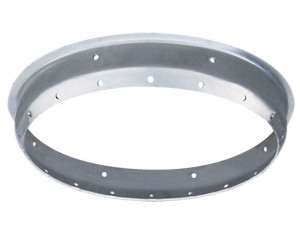
Heavy 10 gauge collar
We build the bin collar out of heavier 10 gauge steel to eliminate having to add additional reinforcing collars. The collar is stamped to reduce variations in dimensions compared to rolled or spun collars.
Every Hog Slat / Georgia Poultry bin is manufactured in-house for complete control of raw material purchasing and manufacturing operations. Our facility includes state-of-art rolling, stamping and finishing machinery to ensure precise fit and finish.
Get a quote on your next bin and see for yourself. Call 800-949-4647, go online www.hogslat.com or stop in at a local Hog Slat or Georgia Poultry store. (click for store locator)
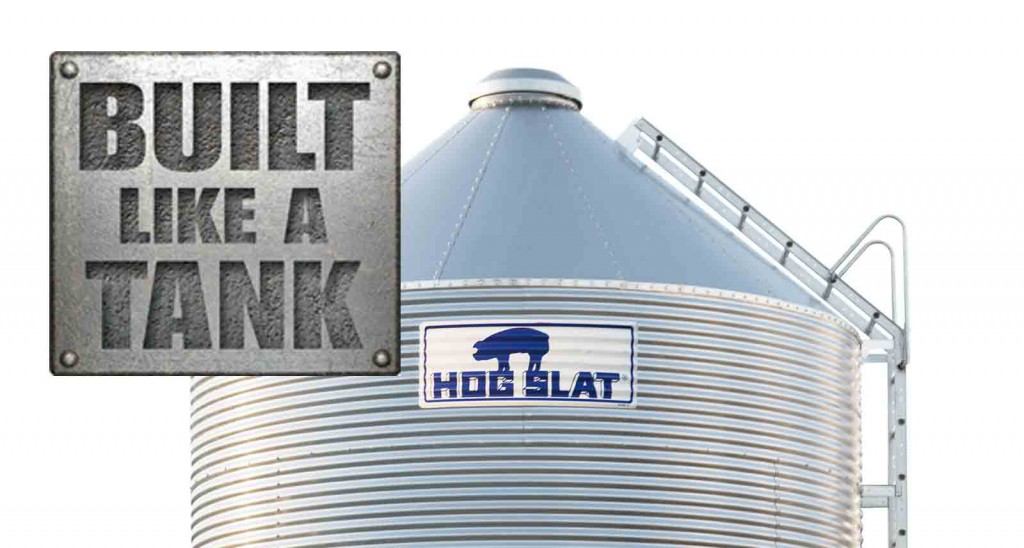
Heavier bins, Stronger bins. Bins designed to last longer.

It starts with the selection of steel. Most feed bins are built from a mixture of steel grades. The sidewall sheets and legs are manufactured from Grade 50 structural steel (50,000 psi) while the other components are produced using a commercial grade type B steel (33,000 psi) The entire Hog Slat bin is manufactured using only Grade 55 Structural Steel with a superior strength of 55,000 psi.
We use stronger steel in the smallest part of our bin than the competition does in their most critical components.
We didn’t stop there.

We also use heavier gauges of steel in every part of the bins; including thicker bottom cone sheets, that resist dents from hammers, to bin collars over four gauges thicker than competitive brands.
Our state-of-the-art, in-house manufacturing allows us to produce heavier, stronger products with precision for ease of assembly and proper fit along with features designed to protect both the operator and the stored feed.
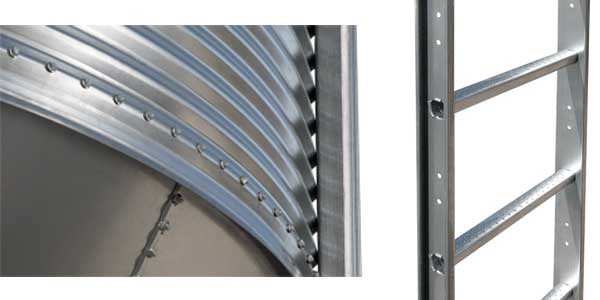
Our improved WeatherEdge™ design directs water away from the hopper, and rounded trapezoid ladder rungs provide for secure footing, exceeding OSHA safety standards. Hog Slat feed bins also feature a spring loaded lid that folds flat, below the fill ring, to protect it from damage during filling.

We are so confident of the quality of the bins that we offer the industry’s best warranty, an extended FIVE-YEAR warranty.
In addition to the great design and durable construction, one of the most important features of our feed bins is the local assembly, delivery, and service provided by our extensive store network. Our local stores selling directly to the end-user allows us to help eliminate extra costs and add value that makes choosing your next feed bins a simple choice.
Longer-lasting bins, a better warranty and local service.
Get a quote on your next bin and see for yourself. Call 800-949-4647, go online www.hogslat.com or stop in at a local Hog Slat or Georgia Poultry store. (click for Store Locator)
Here’s another selection from the 1960 edition of The Yearbook of Agriculture on the latest trends in farrowing.
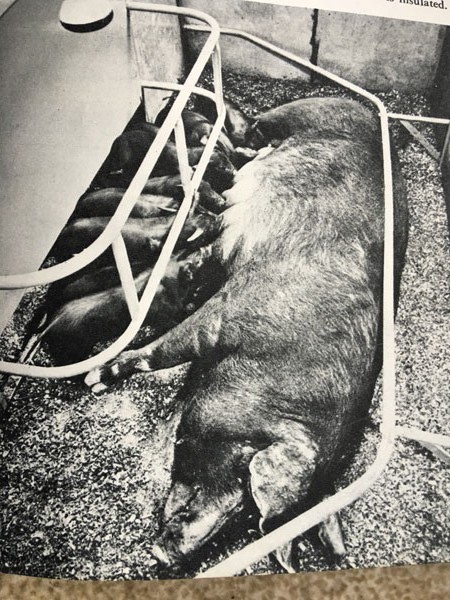
Welfare-friendly farrowing pens
Caption in yearbook:
In this minimum-stress pen, the shape of the guardrail encourages the sow to lie with the teats toward the pigs. The pigs stay where it’s warm – under the heat lamp and behind the guard.
How about this for Ad Lib feeding? An overhead auger delivers feed to the farrowing pens. No carts or scoops are needed.

Labor saving feeding from the past.
And finally, double-decker farrowing crates! I saw one of these set up in Red Oak, Iowa years ago.
From the yearbook:
Hogs in double-deck, all steel, cage-type farrowing stalls. The pigs are transferred after weaning. Manure is removed by mechanical drags.
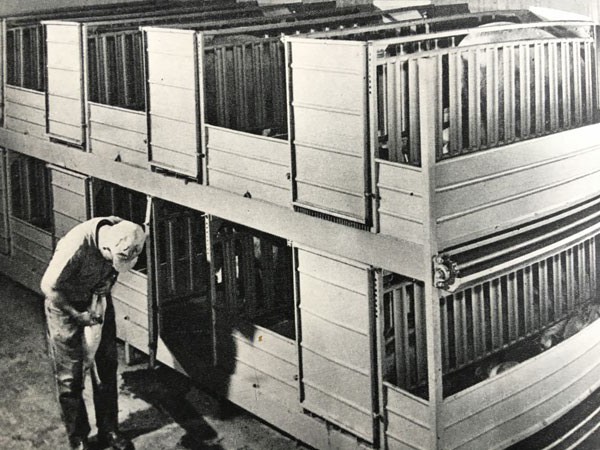
Double-decker farrowing crates.
Hog Slat manufactures a complete line of farrowing equipment for new construction or remodeling an existing facility. Our SowMAX ad lib dispenser feeds lactating sows 24/7 while reducing farm labor. See more at www.hogslat.com or call 800-949-4647.
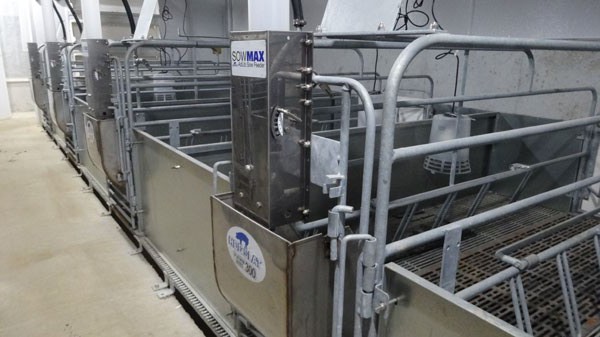
Galvanized Hog Slat farrowing crates with SowMAX Ad Lib dispensers, Cast/ TriDEK floors, and Poly Lamps
Hog Slat’s newest feed drop hangs straight under the feed pipe to reduce twist. Available in two models; HSSD60C for mounting on Grow-Disk metal pipe or HSS55DC for model 55 PVC pipe.

The Center Drop is molded from UV stable polypropylene to prevent damage from sunlight and cold temperatures. An open-top design permits direct installation on feed pipe and a large access plug allows access to inside of the feeder. A plastic clip for record cards completes the exterior features.
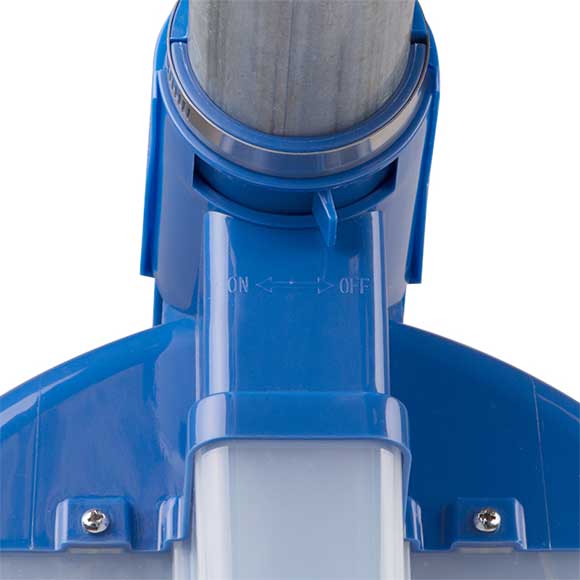
The Center Drop features positive open/close shutoff.

Large adjustment dial permits single-hand regulation feed settings from one to eight pounds.
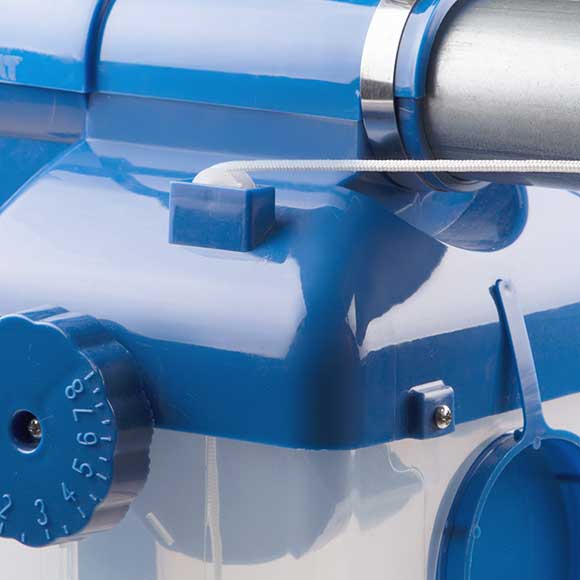
Nylon wheel reduces wear on lifter cord and the weighted ball securely seals bottom opening.
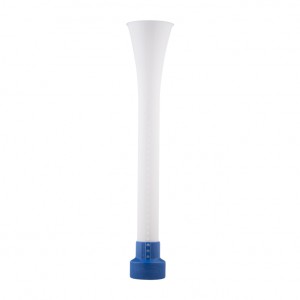
To order go to http://hogslat.com/hog-slat-center-drop-sow-feeder-8-lb
Hog Slat’s Drop Tube Assembly completes the installation to a metal pipe. Available in 2″ or 3″ models, the flared top reduces feed spillage and provides a flexible mount to sow drops.
To order go to http://hogslat.com/grower-select-adjustable-drop-tube-assembly-4
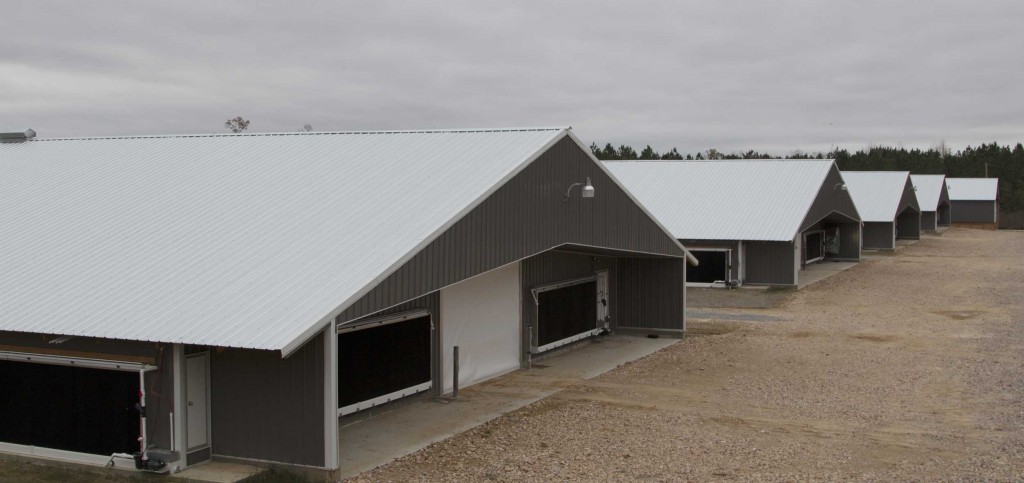
Broiler houses at a Georgia farm.
When it comes down to it, the cost of manufacturing a high-quality product is the same for most companies producing equipment for the livestock and poultry markets. Most companies have identified the most efficient methods to build an anchor bearing, motor, feeder, nipple waterers, etc.
The real cost difference comes from the delivery of those products to the end user. The standard model of distribution, in our industry, involves a manufacturer producing a product line, warehousing it, and employing a sales force to establish a dealer network.
The dealer network stocks the equipment, maintains a storefront, hires salespeople, installs, and services the production systems in a local area for the brand of equipment they represent.
This particular type of distribution model has changed very little over the history of the livestock and poultry production industries. Each member of this distribution model is an independent business entity and is free to add whatever margins they deem necessary (or possible) to the final cost a producer pays.

GrowerSELECT supply chain removes extra margins to reduce the final cost to end users.
Sold through a different type of distribution model, GrowerSELECT goes directly to livestock and poultry growers through our network of regional local stores. Because we own the distribution chain from top to bottom, we add only ONE MARKUP over our cost.
Our cost is based on finished goods plus ONE MARKUP vs. MULTIPLE MARKUPS from the typical distribution model.
Also, we would suggest that we are the low-cost producer for most products. Wait a minute; the first paragraph said the cost of manufacturing was the same for everyone.
True. But if a brand has a loyal dealer network, the pricing to the dealer network will not be challenged. A loyal dealer will continue to buy brand name products even if the cost is excessive.
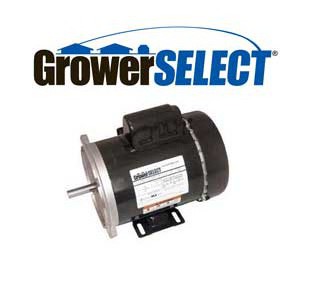
GrowerSELECT auger motor with 2-year warranty.
Name brand motors are a perfect example of this. An auger or fan company buys a motor from a motor manufacturer, puts their logo on it and sells it to a local supplier. The local supplier sells the motor to the end user adding little value to the final price. A local supplier has few other options. Their volume of a particular motor isn’t high enough to go directly to a motor manufacturer, and they have little negotiating power with their chosen brand vendor. The brand company has little incentive to lower the cost to a loyal dealer network. In fact, a brand company can charge different prices in different geographical locations depending on market pressure.
Compare this with GrowerSELECT motors. Our network of over 70 store locations and turnkey construction business allows for large purchases of motors direct from a manufacturer. We forecast purchase amounts for each store location and ship directly with minimal warehousing cost. Local retail pricing continually drives us to buy at a more competitive price.
The conventional distribution chain is directed from the TOP DOWN versus the GrowerSELECT model which is driven from the BOTTOM UP. Lower pricing for comparable products is the result.
The GrowerSELECT distribution model also affects product responsibility. Because we interact directly with the end users, we deal directly with any problems arising with the installed products. We sell it; we service it, and the end user works with one company.
The traditional marketing chain allows room for some question regarding who is responsible for dealing with equipment failures when those problems arise. The manufacturer can blame poor installation, dealer system design, or a number of other reasons (excuses) for a product’s failure. A local supplier can blame the brand company for poor design or manufacturing flaws. The GrowerSELECT distribution system eliminates “finger pointing” and focuses on providing accountability to each and every customer.
 Our customers produce commodities. The lowest cost commodity producer is always the most successful. Our mission is to provide our customers long term value at the lowest possible cost.
Our customers produce commodities. The lowest cost commodity producer is always the most successful. Our mission is to provide our customers long term value at the lowest possible cost.
Ask yourself this question; “Are all the manufacturers, distributors, dealers, installers, and service personnel creating ADDED VALUE in the distribution chain I buy from?” If you hesitated while answering that question, take the next step by changing the way you buy and implementing GrowerSELECT equipment into your operation.
To contact a sales representative in your area or find our nearest locations to you, click here.
- 2026
- 2025
- 2024
- 2023
- 2022
- 2021
- 2020
- 2019
- 2018
- 2017
- 2016
- 2015
- 2013












 Україна
Україна Méjico
Méjico